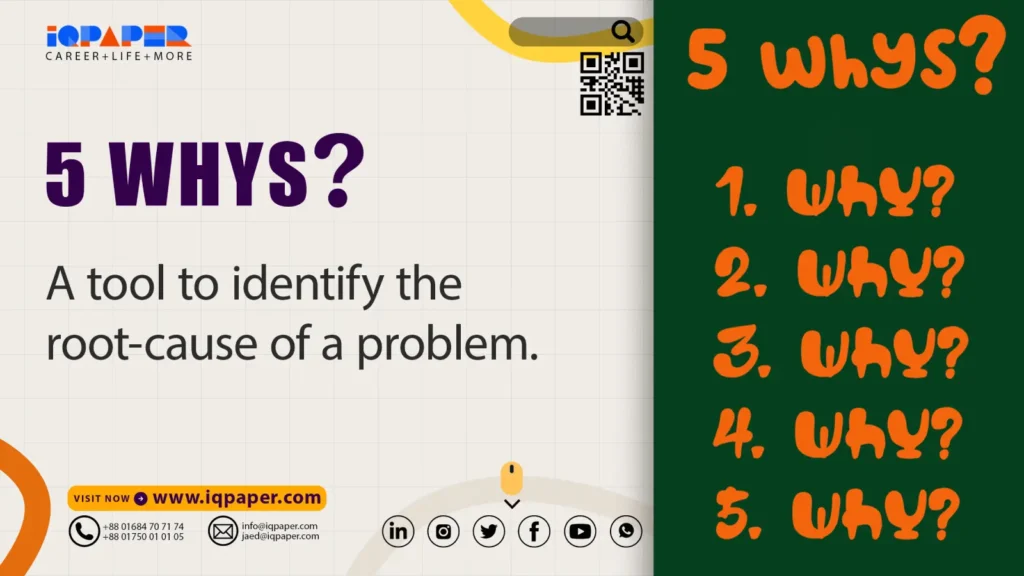The 5 Whys method is a problem solving tool which helps you to find out the root cause of any problem or a defect. The technique is very simple. Here you have to ask five questions with “why?”. Every time you use the answer of the previous question.
The technique was first introduced by Taiichi Ohno at Toyota Motor Corporation. Studies show that asking “why?” five times is usually enough to uncover the root cause of an issue. While repeatedly asking questions is a practice we often use in everyday life, applying it in a more structured way can lead to more accurate and effective results.
There are other similar techniques like fishbone (ishikawa) method, tabular format etc. In our next articles we will discuss it.
How to Use It?
Identify the defect or problem clearly.
Ask “why?” five times.
Use the answer of the previous question as the base of the next question.
Repeat it until you identify the root cause.
This methodology will help you to increase your deep thinking. It’s a very simple but effective method. People can adapt to it quickly and use it instantly.
Example:
You find that your factory is producing 5% more defective products than the acceptable limit. Let’s find out the root cause.
- Why is there an excessive defective product being produced?
Ans: Because the machine is malfunctioning.
- Why is the machine malfunctioning?
Ans: Because one of its parts has broken.
- Why is the part broken?
Ans: This part needs replacement regularly and last time it wasn’t.
- Why wasn’t the part replaced?
Ans: The machine wasn’t maintained last month.
- Why was it not maintained last month?
Ans: The technician has forgotten to maintain it.
Here the root cause is the technician’s negligence.
Corrective actions:
Once the root cause is identified, it’s important to develop and implement corrective actions to address it. Emphasizing proper supervision is key to ensure that no maintenance tasks are overlooked. Additionally, training machine operators is crucial, so they understand which maintenance is required and can confirm whether it’s been completed. A practical step would be to create a maintenance schedule and checklist to display near the machine, allowing operators to easily track and verify the maintenance status.
Monitoring the effect:
Monitor the situation to ensure the problem doesn’t recur. Preventing any further issues is a priority, so it’s important to establish and consistently follow a standard.
Remember this methodology is not about blaming, but about uncovering the root cause of a problem and solving it to ensure the growth. It’s teamwork and open, honest communication is a must for this methodology. The root cause is identified based on what is known at the time and may not be the only root cause.

Volatility is key
Interesting analysis!